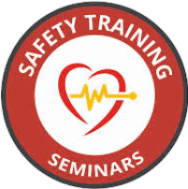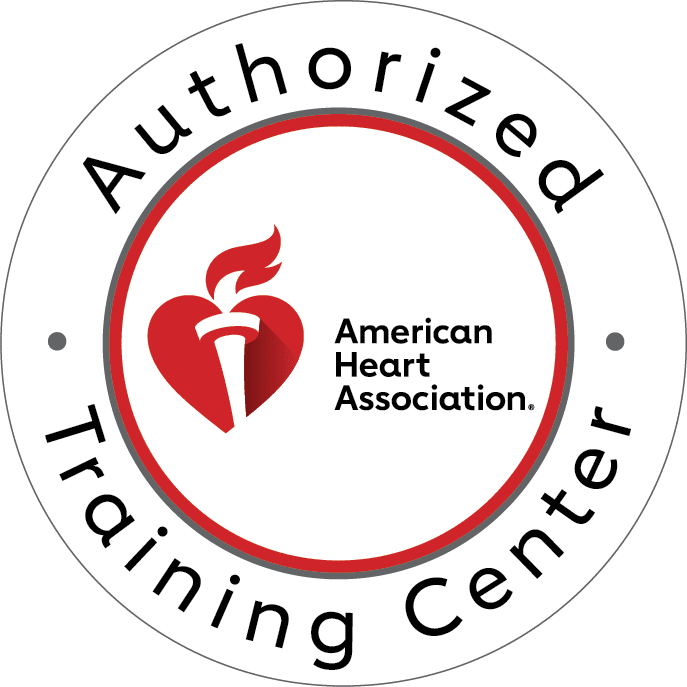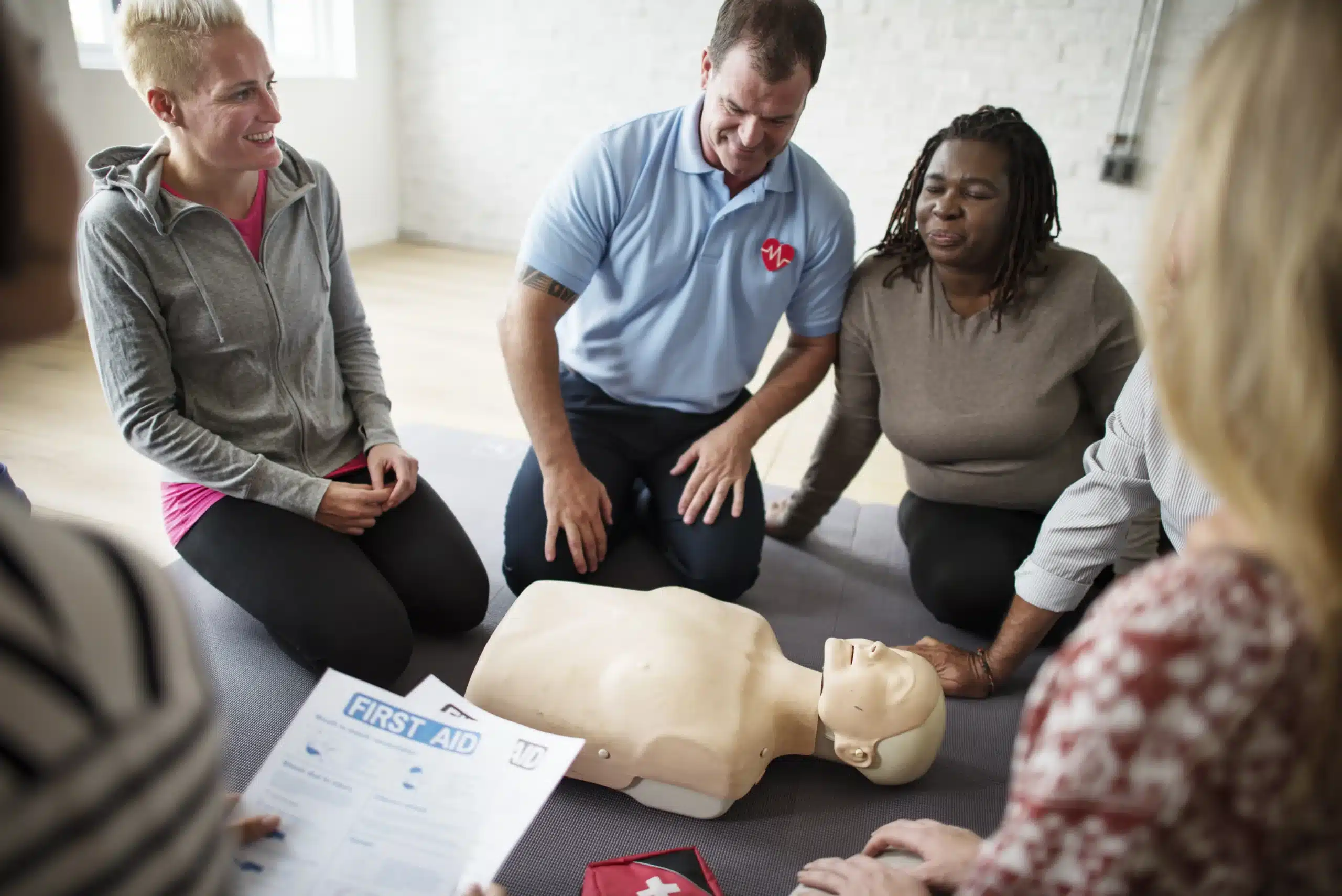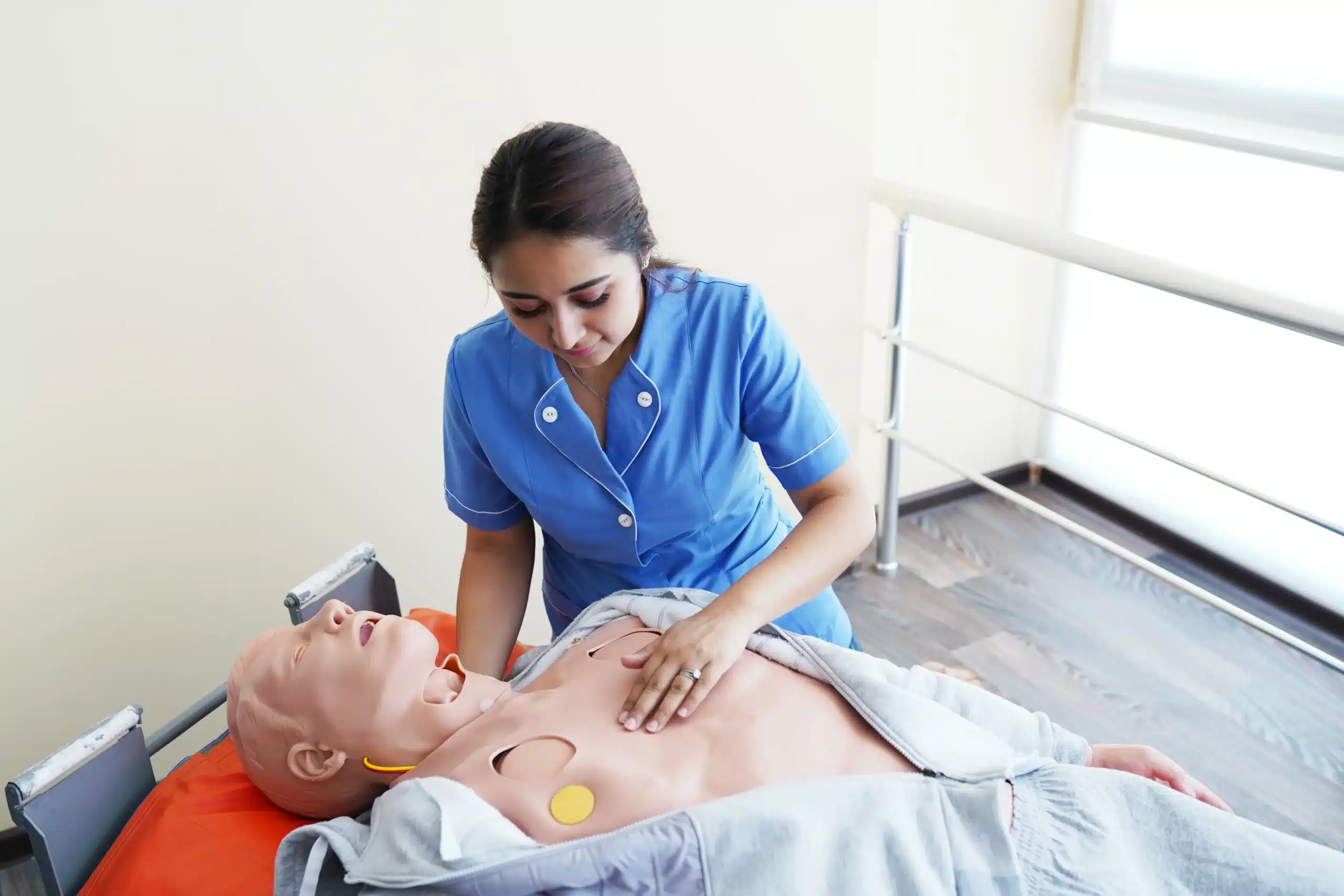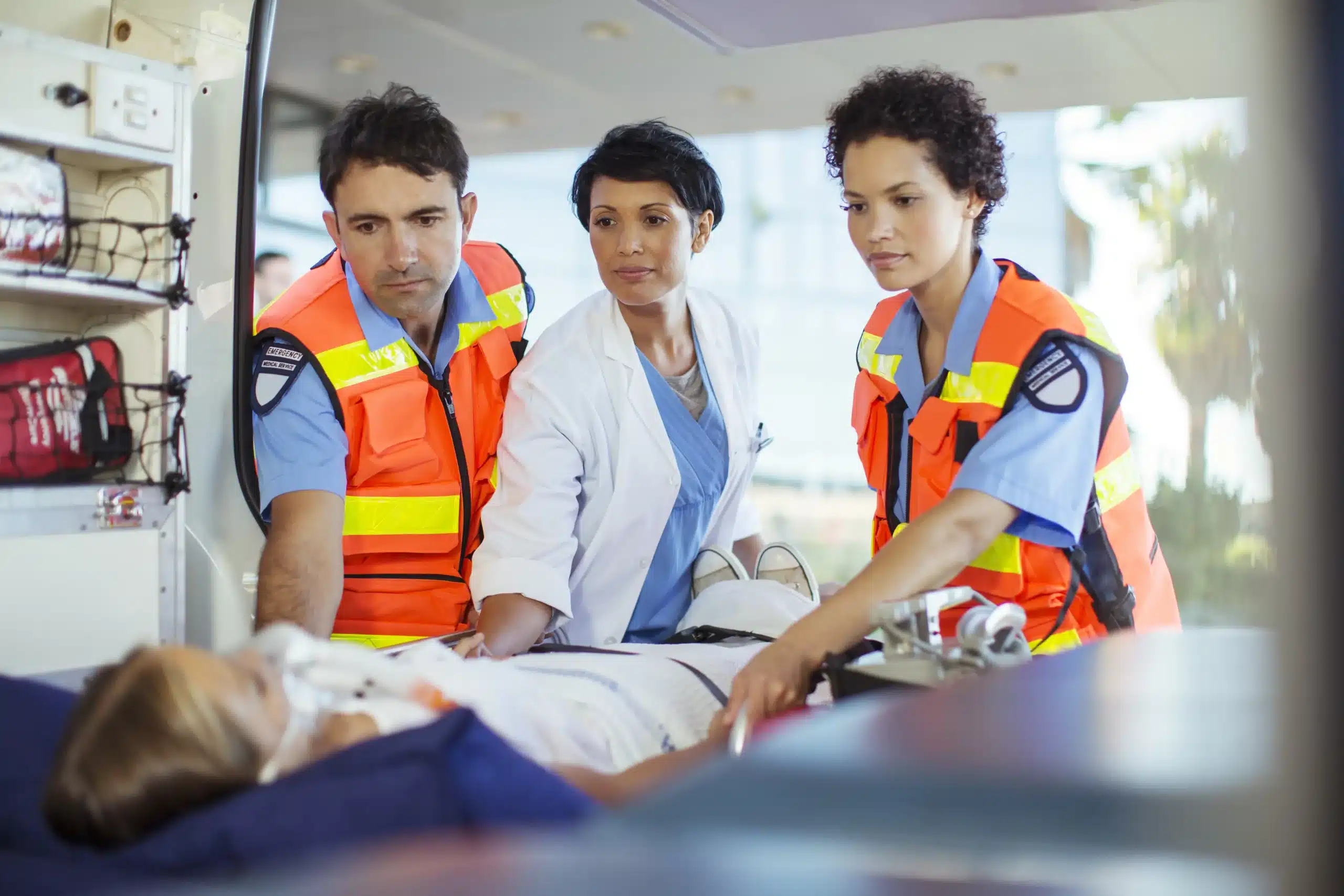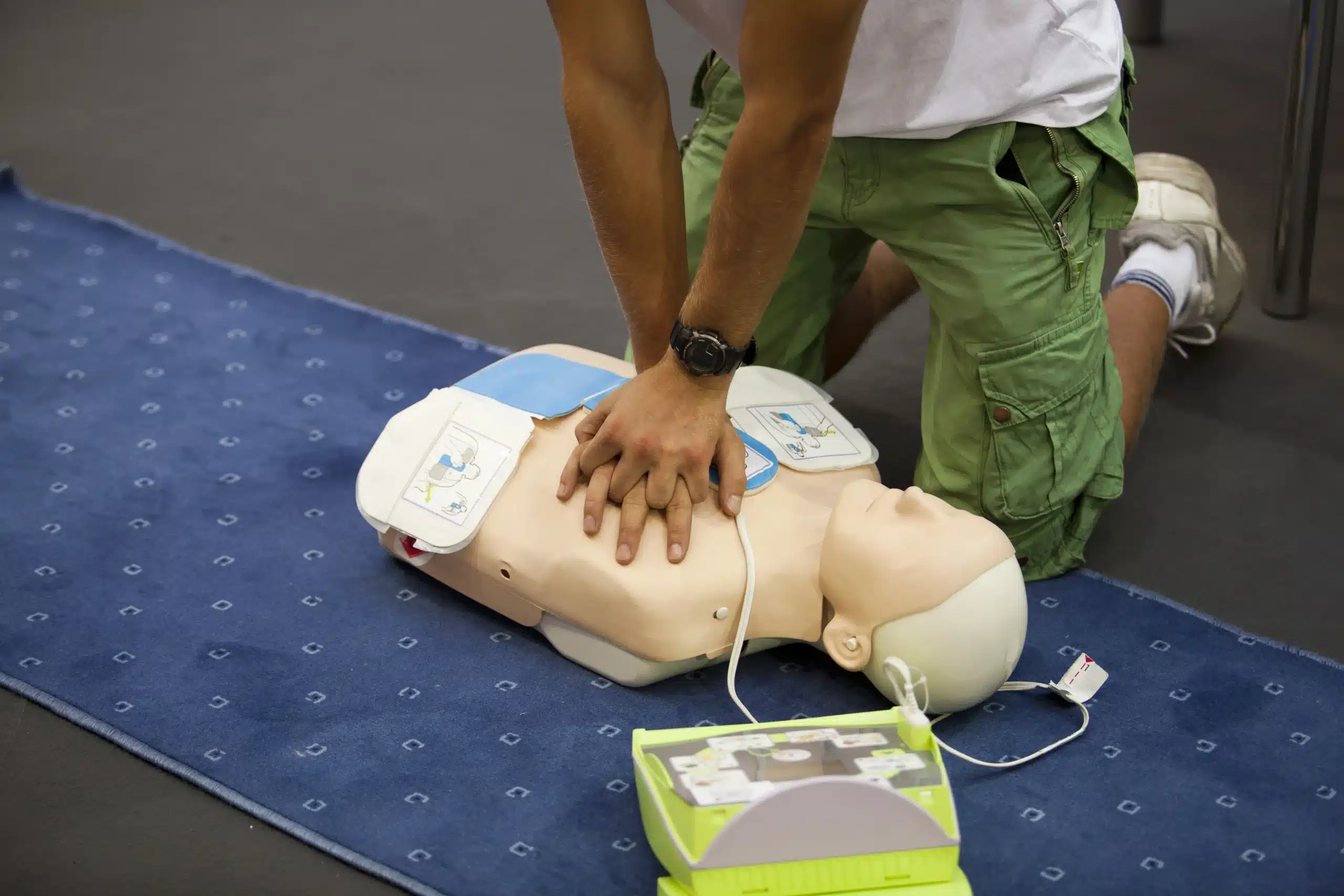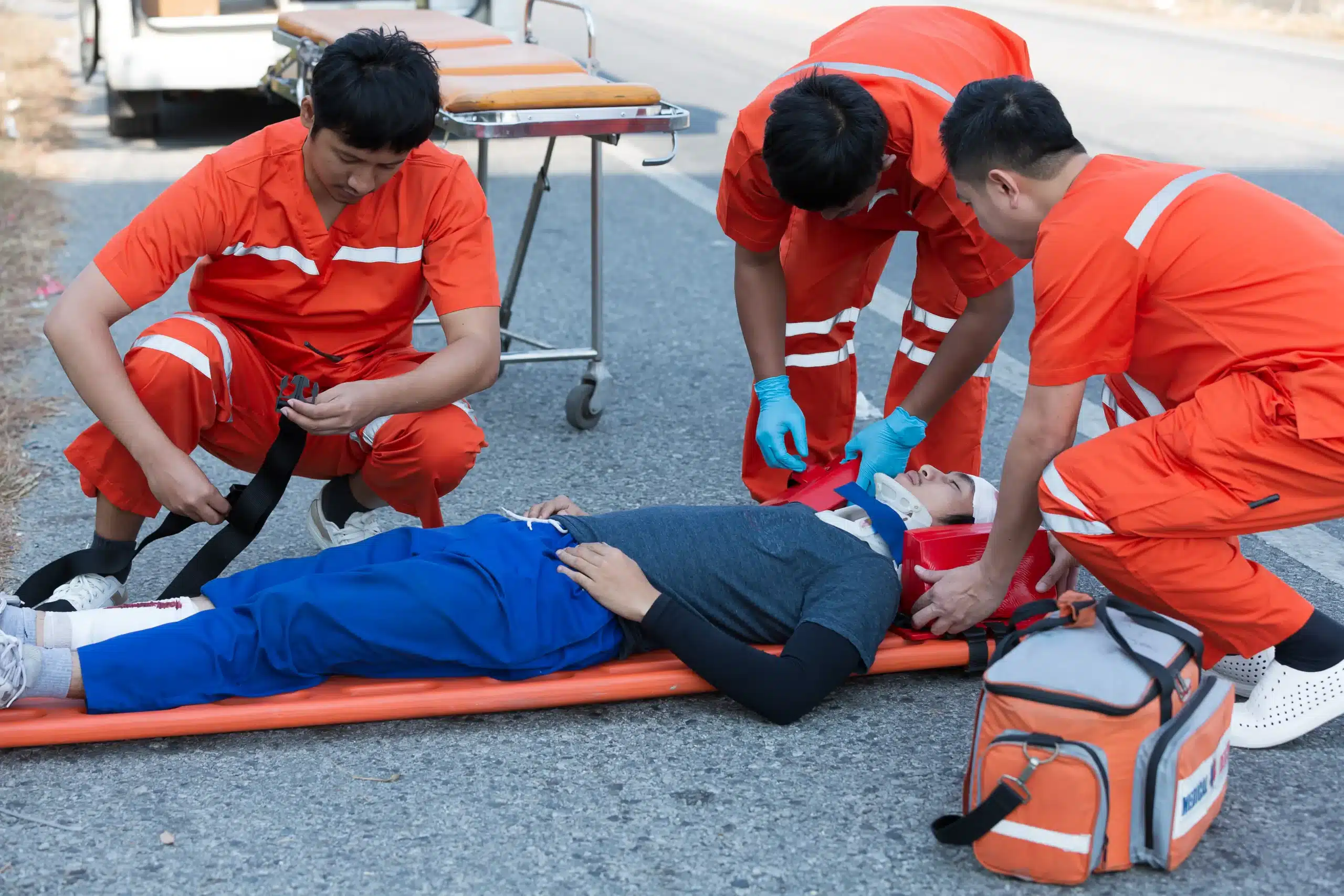In a medical emergency, every second counts. CPR training in Dublin equips you with the skills to respond quickly and effectively, potentially bridging the gap until professional medical help arrives. This comprehensive guide will cover everything you need to know about CPR training in Dublin, from debunking common misconceptions to exploring the various courses available. We’ll delve into the benefits of different training formats, discuss certification options, and provide resources for finding reputable training providers in your area. Whether you’re a healthcare worker, a parent, or simply a concerned citizen, this guide will empower you to take action and make a difference.
Key Takeaways
- CPR skills empower you to save lives: Learning CPR, whether you’re a healthcare professional or not, provides you with the ability to respond effectively during emergencies. Find a course that suits your needs and make a difference.
- Maintain your CPR skills through practice and continuing education: Regular practice and refresher courses are essential for keeping your CPR skills sharp and up-to-date with the latest guidelines. This ongoing commitment ensures you’re always prepared to act confidently and effectively.
- CPR training creates safer communities: CPR training benefits everyone. When individuals are equipped with these life-saving skills, the entire community becomes more resilient and prepared for emergencies. Join a CPR course and contribute to a safer environment for all.
What is CPR Training and Why Does it Matter?
CPR (Cardiopulmonary Resuscitation) training gives you the skills to respond to medical emergencies, especially cardiac arrest. Learning CPR empowers you to take action and potentially save a life while waiting for professional medical help to arrive. This training can dramatically improve the odds of survival for someone experiencing a cardiac event. For those in the Dublin, Livermore, or San Ramon area, Dublin CPR Classes offers a variety of courses.
Common CPR Misconceptions
Several myths about CPR can unfortunately prevent people from learning this essential skill:
-
Myth: Only medical professionals can perform CPR. Anyone can learn CPR—it’s a vital skill for everyone, not just doctors and nurses. Bystander intervention can make all the difference in an emergency. The CPR and BLS Training Institute debunks this myth, among other common misconceptions. Dublin CPR Classes offers group discounts making it even more accessible to learn this life-saving skill.
-
Myth: CPR can be performed on a conscious person. CPR is specifically for individuals who are unresponsive and not breathing. It’s crucial to assess the situation accurately before administering CPR. MyCPR NOW offers further clarification on this and other CPR misconceptions.
-
Myth: CPR requires extensive medical training. CPR training is designed to be straightforward and accessible. You don’t need a medical background to learn the basics and become equipped to help in a crisis. MyCPR NOW addresses this misconception directly. For a fast and convenient online certification option, Dublin CPR Classes utilizes the American Heart Association’s RQI program.
Key CPR Effectiveness Statistics
Understanding how effective CPR can be is a powerful motivator to get trained:
-
Immediate feedback enhances learning. Studies show that detailed feedback during training, often provided through training mannequins, significantly improves CPR proficiency. This hands-on practice is key to retaining these life-saving skills. The NCBI highlights the importance of immediate feedback in CPR training. Dublin CPR Classes offers American Heart Association BLS certification, ensuring you receive high-quality training.
-
Corrective feedback devices improve skills. Research indicates that using corrective feedback devices during training leads to better skill acquisition and retention over time. This makes the training even more valuable in the long run. ScienceDirect explores the influence of feedback devices on CPR skill development.
CPR Training Courses in Dublin
Dublin offers a variety of CPR training courses to meet different needs. Whether you’re a healthcare professional, a concerned parent, or simply want to be prepared for emergencies, you can find the right training in Dublin. Let’s explore some of the key courses available:
Basic Life Support (BLS)
The Basic Life Support (BLS) certification is essential for healthcare providers and anyone seeking advanced life-saving skills. This course covers high-quality CPR, AED use, and effective team resuscitation, emphasizing coordinated efforts during emergencies. BLS certification is often a job requirement for many healthcare roles and demonstrates a commitment to patient safety.
Heartsaver CPR/AED
Designed for the general public, the Heartsaver CPR/AED course equips participants with the skills to perform CPR and use an AED. This course empowers individuals to respond confidently during cardiac emergencies. It’s a valuable asset for anyone who wants to be prepared to help in a crisis, from teachers and coaches to parents and caregivers. Learning these skills can truly make a difference.
Pediatric CPR
Pediatric CPR training focuses on the specific techniques needed for infants and children. This course is essential for parents, babysitters, childcare providers, and anyone regularly interacting with young children. It covers CPR modifications for different age groups and addresses common childhood emergencies. Knowing how to respond effectively can provide critical support until professional medical help arrives.
First Aid & CPR Combo Courses
For comprehensive training, consider a First Aid and CPR combo course. These courses combine life-saving techniques with essential first aid skills, preparing you for various emergencies. You’ll learn to manage injuries, handle medical emergencies, and administer CPR. This combined approach offers a well-rounded skill set for anyone who wants to be fully prepared for unexpected situations.
Costs and Certification
CPR training is an investment in life-saving skills, and understanding the associated costs and certification details is essential. Let’s break down course pricing, how long your certification is valid, and why staying up-to-date is so important.
Course Price Ranges
CPR and first aid course prices in Dublin differ based on several factors. The level of training you need (CPR, BLS, ACLS, etc.) plays a big role, as does the course format (online, in-person, or blended learning). The specific training provider you choose will also influence the overall cost. You can find options ranging from basic CPR courses to more advanced certifications. Check with various providers like Dublin CPR Classes for their latest pricing and any available discounts, including group discounts.
Certification Validity
Most CPR certifications, including those for BLS, ACLS, and PALS, are valid for two years. However, there are exceptions, such as the EMSA Child Care Health & Safety certification, which doesn’t have an expiration date. Knowing the validity period of your specific certification is crucial for ensuring your skills are current and recognized. Dublin CPR Classes offers a variety of courses with varying certification lengths, so be sure to confirm the details when you register. You can also find additional CPR training resources in their Northern CA CPR directory.
Renewal Requirements
CPR guidelines and best practices can change, so regularly updating your CPR knowledge is vital. Renewal courses cover the core skills of CPR—chest compressions, rescue breaths, and AED use—and incorporate the latest techniques and protocols. Think of it as a tune-up for your life-saving skills. Recertification not only keeps your skills sharp but also demonstrates your commitment to providing effective assistance in emergencies. Regularly updating your CPR knowledge maximizes the victim’s chances of survival. You can find recertification courses through providers like Dublin CPR Classes and the American Heart Association. Staying current with your CPR training means you’re always prepared to make a difference.
Training Formats: In-Person, Online, Blended
CPR training comes in a few different formats, each designed to fit various learning styles and schedules. Understanding the pros and cons of each can help you choose the best option for your needs. Let’s take a look at in-person, online, and blended learning.
Benefits of Each Format
-
In-Person Training: This traditional format offers hands-on learning with a certified instructor. You’ll practice CPR techniques on mannequins and get real-time feedback, which is essential for developing proper form and confidence. The face-to-face interaction allows you to ask questions and learn from the instructor’s experience. Dublin CPR Classes offers in-person training taught by experienced professionals, often firefighters and paramedics, bringing real-world expertise to the classroom. This direct interaction is invaluable for mastering the skills needed to perform CPR effectively. For larger groups, they also offer group discounts.
-
Online Training: Online CPR courses offer flexibility and convenience. You can learn at your own pace, anytime, anywhere, using your computer or mobile device. This format is perfect for busy individuals or those who prefer self-directed learning. While online training provides a solid foundation in CPR knowledge and allows you to renew certifications online through programs like RQI, it’s important to be aware that some online-only courses might not include a live skills check. The American Heart Association offers a variety of online resources and courses to supplement your training.
-
Blended Learning: Blended learning combines the best of both worlds. You’ll complete the coursework online at your convenience, then attend an in-person skills session to practice what you’ve learned and receive instructor feedback. This format offers flexibility while still ensuring you get the hands-on experience necessary to perform CPR effectively. RQI classes are a great example of blended learning, offering convenient online learning combined with in-person skills validation. This hybrid approach is ideal for those who want a thorough understanding of CPR principles combined with the practical application of those skills.
Choose the Right Format
Selecting the right format depends on your learning style, schedule, and specific requirements. If you thrive in a structured environment and value hands-on practice, in-person training might be your best bet. If you need flexibility and prefer self-paced learning, an online course could be a good fit. And if you want a balance of both, blended learning offers a convenient yet comprehensive approach. Consider what works best for you and choose the format that will set you up for success. For those in the Northern California area, check out this helpful CPR directory to find training options near you.
Top Dublin CPR Training Providers
Finding the right CPR training provider is crucial for a positive and effective learning experience. Here are some reputable options in and around Dublin:
Dublin CPR Classes
Dublin CPR Classes offers a comprehensive range of certifications, including BLS, ACLS, PALS, and First Aid. They cater to both healthcare providers and the general public, with flexible schedules designed to fit busy lifestyles. Their commitment to low prices and excellent customer service makes them a popular choice. Check out their CPR class directory for Northern California. For larger groups, they offer group discounts. Convenient online recertification is also available through the RQI program.
American Heart Association Training Centers
Safety Training Seminars, an American Heart Association Training Center, provides various in-person CPR and First Aid courses in nearby Livermore. This location offers a convenient option for those in surrounding areas, including Dublin. They offer a full suite of AHA-certified courses, from basic CPR to advanced certifications like BLS, ACLS, and PALS.
Red Cross Training Options
The Red Cross offers a variety of CPR/AED training options in Dublin, including in-person classes, online learning, or a blended learning approach. Their in-person sessions provide hands-on training, resulting in a two-year certification that meets OSHA requirements. For those seeking flexibility, their online and blended learning options offer a convenient way to learn these essential skills. You can explore Red Cross CPR classes on their website.
Local Hospitals & Community Centers
Local hospitals and community centers frequently offer CPR and First Aid training courses. These classes are often geared toward the general public. Check with hospitals and community centers in Dublin and surrounding areas for information on classes. Look at resources like the City of Dublin website or local hospital websites for course schedules and registration details.
Choose the Right CPR Training
Finding the right CPR training involves understanding your needs, considering your schedule, and verifying the instructor’s expertise. It’s a personal decision, so take your time and choose a program that best suits your lifestyle and learning preferences.
Assess Your Needs & Goals
Before signing up for a CPR class, ask yourself why you’re taking it. Are you a healthcare professional needing American Heart Association BLS certification? Or are you a parent wanting to learn basic life support for peace of mind? CPR training is crucial, but the right course depends on your personal or professional goals. Clearly defining your objectives will help you choose the appropriate training level. Healthcare providers, for instance, often require more advanced training than someone seeking general knowledge.
Consider Time Commitments
Life gets busy, so consider how much time you can realistically dedicate to CPR training. Fortunately, there are flexible options. Dublin CPR Classes offers courses daily, so you can find a schedule that works for you. If you’re learning with a group, check out their discount group classes. Consider the course format, too. Do you prefer in-person instruction, online learning, or a blended approach? Think about the learning environment that best suits your needs and availability.
Evaluate Instructor Qualifications
Learning from experienced instructors is key to effective CPR training. Look for certified instructors with real-world experience, like the firefighters and paramedics who teach at Dublin CPR Classes. Their practical insights and expertise can significantly impact your learning. Don’t hesitate to ask about an instructor’s background and qualifications before registering for a course. A knowledgeable instructor can answer your questions, provide helpful feedback, and ensure you feel confident performing CPR in an emergency.
Enroll in CPR Training: Step-by-Step
Ready to learn CPR? Great! This section breaks down the enrollment process into easy-to-follow steps, covering everything from selecting the right course to registration and payment.
Select a Course
First, determine the right CPR course for you. Are you a healthcare provider needing BLS certification? Or are you looking for a basic CPR/AED course? Dublin CPR Classes offers a variety of American Heart Association courses, so you can find the perfect fit. Consider your current skills, job requirements, and personal goals. If you’re unsure, contact Dublin CPR Classes—their team can help.
Register
Once you’ve chosen your course, registration is simple. Dublin CPR Classes offers flexible scheduling, with classes daily from 8 am to 10 pm. This accommodates most schedules. Check their website for upcoming dates and times. You can usually register online with a simple form, providing your contact information and selecting your preferred date. For group discounts, contact them directly.
Payment & Discounts
CPR certification costs vary based on the course and provider. Dublin CPR Classes offers a low-price guarantee, ensuring good value. Payment is typically handled during online registration via credit card or other secure methods. Ask about available discounts, especially for group registrations. Discounts may also be available for students, seniors, or returning customers.
Prepare for Your CPR Class
Getting ready for your CPR class isn’t just about showing up—it’s about preparing yourself to learn potentially life-saving skills. Knowing what to expect, what to bring, and how to prepare beforehand can make a big difference in how much you get out of the training. At Dublin CPR Classes, we want you to feel confident and ready to learn.
What to Expect
CPR training blends interactive learning and hands-on practice. Expect a mix of lectures, demonstrations, and discussions covering essential concepts like recognizing cardiac arrest, performing chest compressions, giving rescue breaths, and using an AED. You’ll learn the importance of CPR and how to respond effectively in various emergency scenarios. Courses cater to different skill levels, from basic CPR and first aid to advanced certifications like Basic Life Support (BLS) for healthcare providers. Choose the course that aligns with your needs and goals. Our instructors at Dublin CPR Classes create a supportive learning environment where you can ask questions and practice your skills comfortably.
What to Bring
We provide all the necessary training equipment, but there are a few things you might want to bring for your own comfort. A notepad and pen are helpful for taking notes during the class. Comfortable clothing is recommended, as you’ll be actively participating in hands-on practice. Consider bringing a water bottle to stay hydrated. Check our FAQ page for any location-specific recommendations.
Pre-Course Study Materials
While not required, reviewing some pre-course materials can give you a head start. Regularly updating your CPR knowledge is crucial for providing effective assistance. You can find helpful resources, such as videos and articles, on the American Heart Association website. Familiarizing yourself with the basics beforehand allows you to focus on mastering the practical skills during class. Studies show that engaging with study materials before class can improve CPR proficiency. We offer RQI classes for quick online certification. Consider taking advantage of these resources to prepare yourself thoroughly.
Maintain Your CPR Skills
Once you’ve earned your CPR certification, staying sharp on those life-saving skills is essential. Regular practice and keeping up with the latest guidelines will ensure you’re always prepared to respond effectively in an emergency.
Practice Techniques
Hands-on practice is essential for maintaining muscle memory and confidence in your CPR abilities. While practicing on a mannequin might seem basic, using one that provides feedback on your technique can significantly improve your skills. Look for features like compression depth and rate indicators, which offer real-time feedback and help you refine your technique. This immediate feedback keeps you engaged and motivated to achieve the best possible CPR performance. Consider investing in a personal mannequin or finding local resources that offer practice sessions.
Refresher Courses
Even with regular practice, taking refresher courses is crucial. These courses reinforce your existing knowledge and introduce you to any updated procedures or guidelines. They also provide a structured environment to practice your skills under the guidance of a certified instructor. Think of it as a tune-up for your CPR skills, making sure you’re always ready to respond effectively. Check with your local training centers, like Dublin CPR Classes, for available refresher courses.
Guideline Updates
CPR guidelines are regularly reviewed and updated to reflect the latest scientific research and best practices. Organizations like the American Heart Association (AHA) and the International Liaison Committee on Resuscitation (ILCOR) collaborate to review and update these guidelines approximately every five years. Staying informed about these updates is vital for providing the most effective CPR. Check in with your certifying organization or training provider, such as the American Heart Association, for information on the latest guideline revisions. Dublin CPR Classes also keeps current with the latest guidelines, ensuring their courses always reflect the best practices.
The Impact of CPR Training in Dublin
CPR training has a ripple effect, impacting not only individuals but the entire Dublin community. From fostering a culture of preparedness to enhancing professional skills, the benefits are far-reaching.
Community Benefits
CPR and first aid training strengthens community safety. In a city like Dublin, equipping residents with these skills creates a network of potential lifesavers. When more people are trained, bystanders are more likely to intervene during emergencies, increasing the chances of survival before professional help arrives. This sense of shared responsibility creates a safer environment for everyone. Investing in CPR training creates a ripple effect, empowering individuals to confidently respond to emergencies and potentially save lives.
Personal & Professional Advantages
Beyond the community impact, CPR training offers significant personal and professional advantages. Learning CPR empowers you to act quickly and effectively in critical situations, providing aid to loved ones, colleagues, or even strangers. Regularly refreshing your CPR knowledge ensures you remain a valuable link in the chain of survival. Obtaining certifications, especially in fields like healthcare, demonstrates a commitment to patient safety and high-quality care. Studies show a correlation between training and positive attitudes towards CPR and AED use. This confidence translates to more effective responses during real-life emergencies. Whether you’re a healthcare provider, childcare professional, or simply someone who wants to be prepared, CPR training equips you with invaluable skills. For professionals, CPR certification can enhance your resume and open doors to new opportunities. It showcases your dedication to safety and preparedness, valuable assets in any workplace.
Related Articles
- Debunking Common CPR Myths for Better Preparedness
- Why CPR is Crucial in Healthcare
- Find CPR Certification Near Me: A Practical Guide – Dublin CPR Classes
- CPR Classes in Dublin: Your Complete Guide – Dublin CPR Classes
- CPR Certification for Dublin Home Caregivers: A Complete Guide – Dublin CPR Classes
Frequently Asked Questions
What does CPR stand for, and what is its main purpose? CPR stands for Cardiopulmonary Resuscitation. It’s a life-saving technique used when someone’s heart has stopped beating. The goal of CPR is to maintain blood flow and oxygen to the brain and other vital organs until professional medical help arrives.
If I’m not a medical professional, can I still learn CPR? Absolutely! CPR training is designed for everyone, not just medical professionals. In fact, bystander CPR can significantly increase someone’s chances of survival before paramedics arrive. Several organizations offer CPR courses tailored to the general public.
What are the different types of CPR courses available? Several CPR courses cater to different needs. Basic Life Support (BLS) is often required for healthcare providers and covers advanced life-saving techniques. Heartsaver CPR/AED courses are designed for the general public and focus on essential CPR skills and AED use. Pediatric CPR courses teach modifications for infants and children. First Aid and CPR combo courses combine life-saving techniques with essential first aid skills.
How much does CPR training cost, and how long is the certification valid? The cost of CPR training varies depending on the course type, format (online, in-person, or blended), and the training provider. Most CPR certifications are valid for two years. However, always check with your specific provider for their pricing and certification validity period. Many providers offer discounts for groups, students, or returning customers.
How can I maintain my CPR skills after completing the training? Regular practice is key to maintaining your CPR skills. Consider investing in a personal CPR mannequin for practice. It’s also essential to take refresher courses to stay up-to-date with the latest guidelines and techniques. These courses reinforce your knowledge and ensure you’re always prepared to respond effectively in an emergency.
